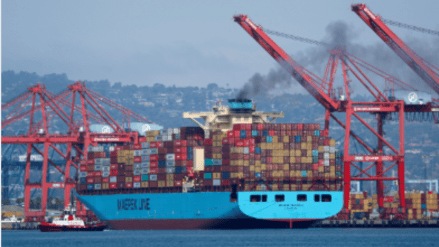India’s garment exports in 2023-24 at $ 14.5 billion were lower than what was achieved in 2013-14 and it is not competition in world markets, but lack of access to quality raw materials particularly synthetic fabrics that has led to negative growth, according to a report by a trade policy think tank. This is despite the sector holding immense employment potential.
High import duties on fabrics, complex Customs and other regulations, force the industry to rely on domestic manufacturing which is concentrated, leading to increase in costs. This makes Indian garments overpriced and unappealing to global suppliers who prefer specific fabric sources, the report by Global Trade Research Initiative said.
Exporters need to import fabric to meet buyer specifications but Quality Control Orders (QCOs) complicate these imports pushing exporters to locally produced fabrics which may not meet specifications and are expensive too. Exporters in Vietnam and Bangladesh face no such restrictions and have gained substantial global market share.
QCOs on raw material for synthetic fabrics like polyester viscose fibre and viscose staple fibre require foreign suppliers to also get Bureau of Standards certification making imports expensive and slower. Due to the curbs the domestic prices of PSF and VSF are 20% higher than the international market.
Although the government exempts imports under the Advance Authorisation Scheme, Export Oriented Units (EOUs), and Special Economic Zones (SEZs) from QCO requirements, most small firms do not utilise these schemes.
A massive overhaul of DGFT (Directorate General of Foreign Trade) and Customs procedures, coupled with reforms to the Production Linked Incentive scheme for textile sector and addressing monopolistic practices, are essential to make Indian garment exports competitive on the global stage, the report said.
The PLI scheme for Textiles focuses on achieving an export target of $100 billion by 2030 by promoting scale production in MMF (Man-Made Fiber) apparel, MMF fabrics, and technical textiles. However, as India’s textiles and garment exports today are lower than 2015 exports, it’s imperative that the PLI focuses on all products and not only synthetics.
Despite investing hundreds of crores, many firms are unable to meet all the scheme’s requirements. It seems adequate industry consultations were not carried out, GTRI pointed out. The PLI needs to give flexibility to the units to get some of the work done from others. Relaxations are also needed in the annual turnover criteria and incremental turnover target to help the beneficiaries.
In 2023, China exported $ 114 billion worth of garments, followed by the EU ($ 94.4 billion), Vietnam ($ 81.6 billion), Bangladesh ($ 43.8 billion), and India with just $14.5 billion. From 2013 to 2023, Bangladesh’s garment exports grew by 69.6 per cent, Vietnam’s by 81.6 per cent, and India’s by only 4.6 per cent.
